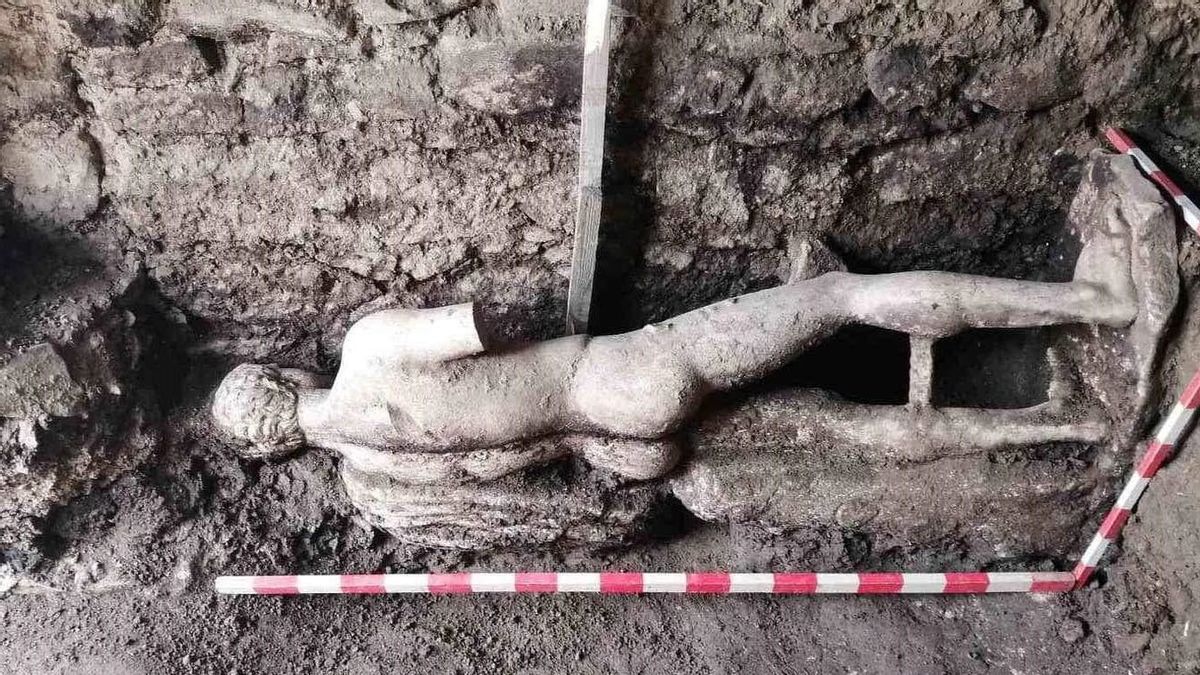JAKARTA - Bulgarian archaeologists discovered an unexpected treasure last month, a marble statue depicting the Greek god Hermes while digging ancient Roman ditches.
The discovery of the 6.8-foot (2-meter) statue was carried out during excavation work at the site of the ancient city of Heraplea Sintica in southwestern Bulgaria, which is located near the Greek border.
The archaeologist who led the work said that after the earthquake destroyed the vast city around 388 AD, the statue had been placed carefully in ditches and covered with soil, explaining how well it was in good condition.
"His head was preserved. (In) excellent condition. There were several fractures in hand," said Lyudmil Vagalinski, who led the team of archaeologists, adding the statue was a Roman copy of ancient Greek works.
Herapela Sintica is a big city founded by King of Ancient Macedonia Philip II from Macedonia, between 356 BC and 339 BC in the region now Bulgaria in Macedonia Pirin.
Archaeologists say Herapella Sintica's population is likely trying to preserve the statue, even after Christianity was adopted as the official religion in the Roman Empire.
SEE ALSO:
"Everything that smells of mitigation is prohibited, and they have joined new ideologies, but it seems they are still keeping their old gods," he explained.
It is known, after the earthquake, Heraplea Sintica experienced a rapid decline and was abandoned around 500 AD.
The English, Chinese, Japanese, Arabic, and French versions are automatically generated by the AI. So there may still be inaccuracies in translating, please always see Indonesian as our main language. (system supported by DigitalSiber.id)


















